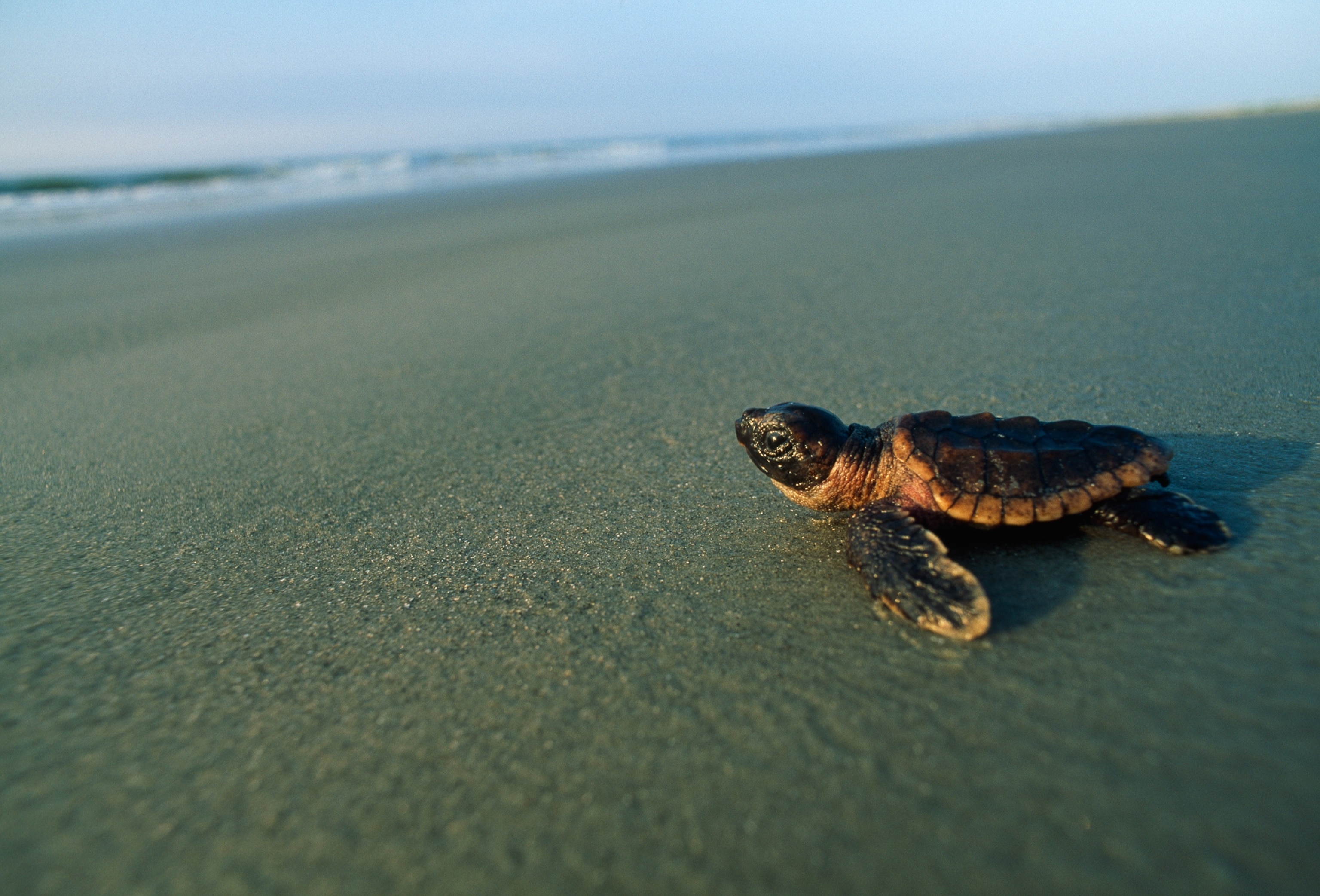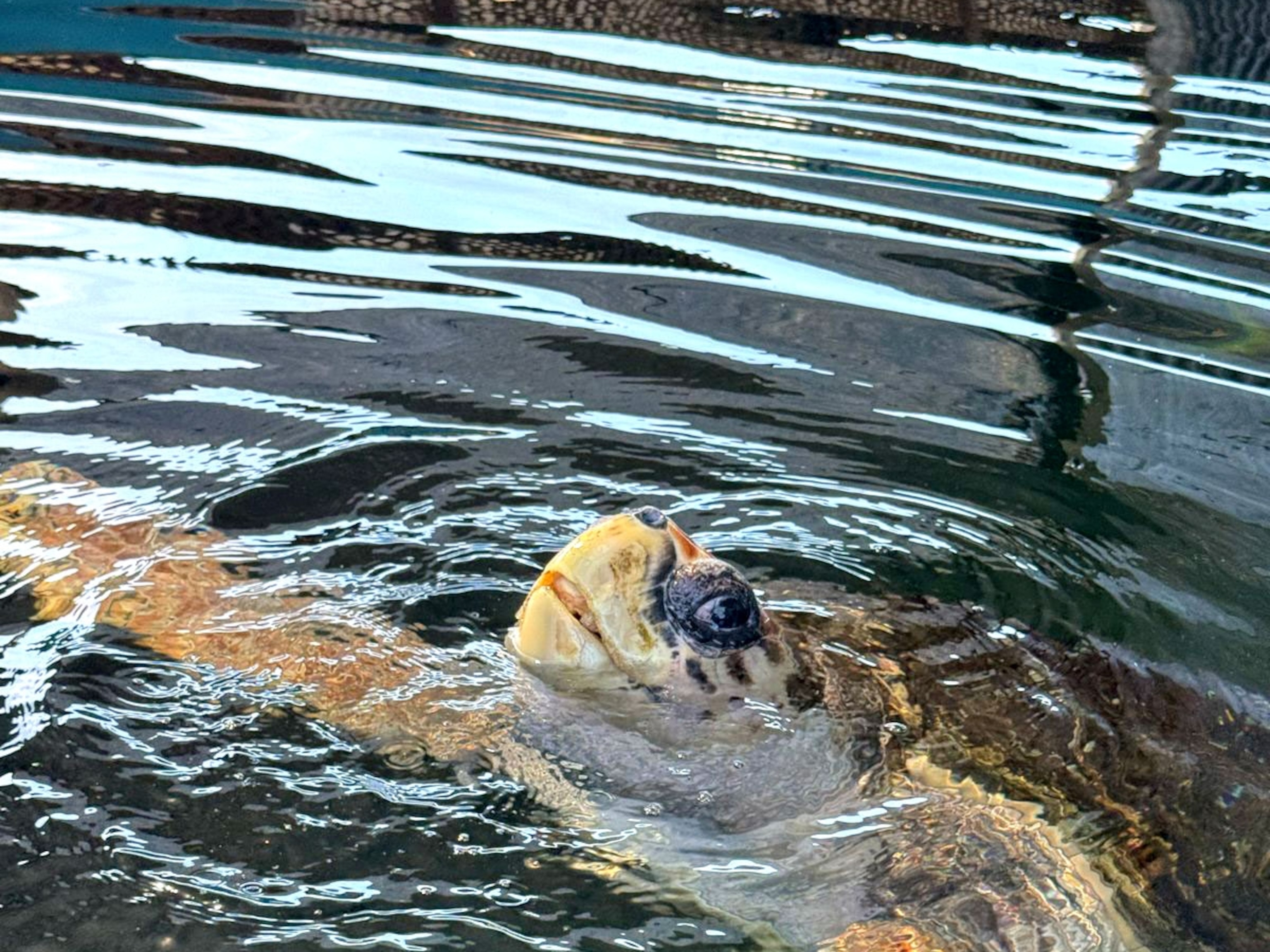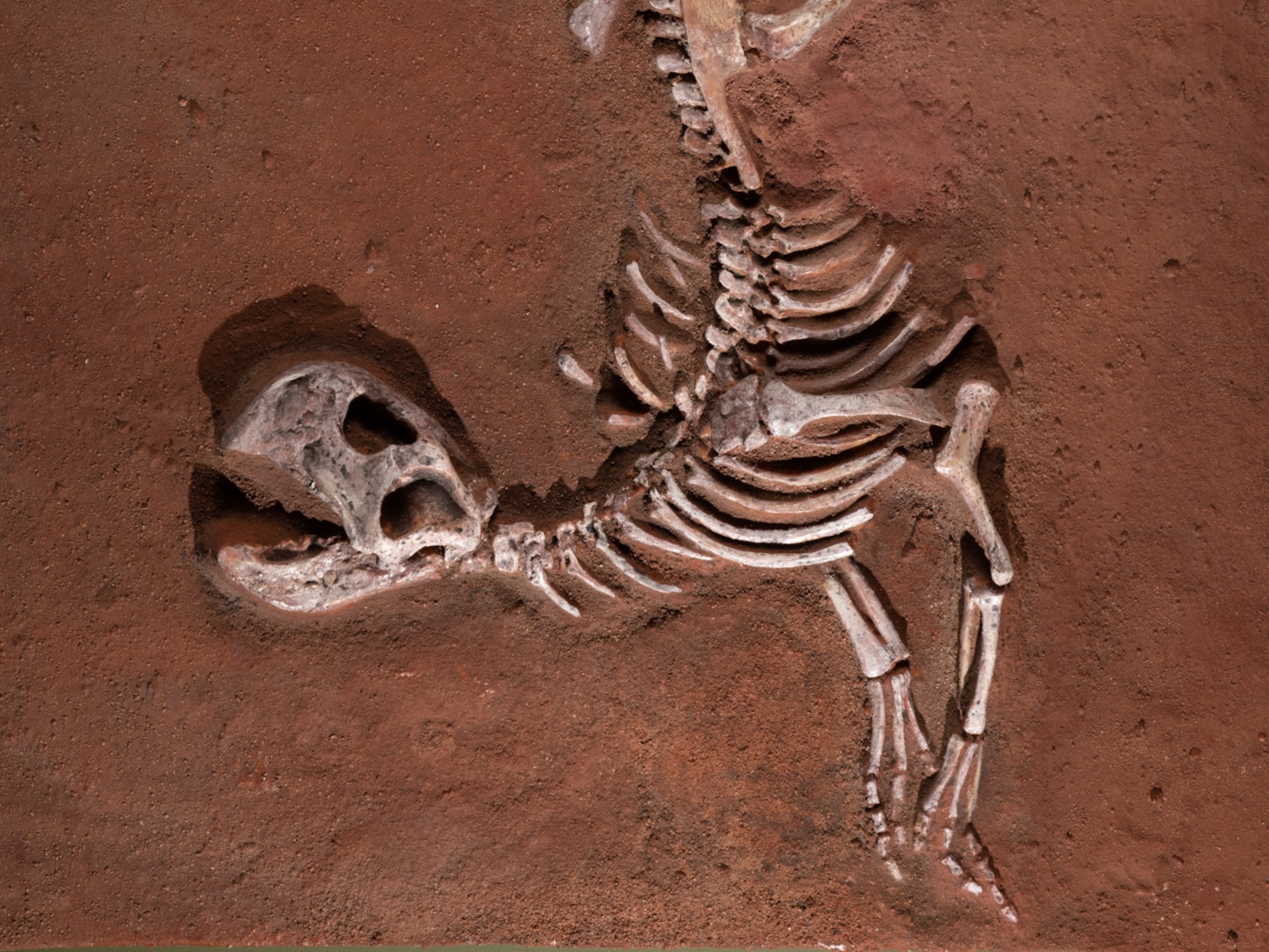
How Do Sea Turtles Find the Exact Beach Where They Were Born?
The marine reptiles use Earth's magnetic field as a guide back home, new study says.
For loggerhead sea turtles, home is where your (magnetic) heart is.
After hatching on beaches around the world, these huge marine reptiles undertake multiyear, epic migrations at sea. Then, the turtles return to the exact spot where they were born to mate and lay their own eggs.
Scientists have long known that the turtles, like many animals, navigate at sea by sensing the invisible lines of the magnetic field, similar to how sailors use latitude and longitude. But they didn't know how the turtles were able to return to the very spot where they were born. (See "Migrating Monarch Butterflies Use Magnetic Compass to Cut Through Clouds.")
Now a new study has the answer: The turtles also rely on Earth's magnetic field to find their way home. That's because each part of the coastline has its own magnetic signature, which the animals remember and later use as an internal compass.
It's not an easy commute, though—the magnetic field changes slowly, and loggerheads have to shift their nesting sites in response, according to the study, published January 15 in Current Biology.
"It's pretty fascinating how these creatures can find their way through this vast expanse of nothing," said study co-author J. Roger Brothers, a biology graduate student at the University of North Carolina, Chapel Hill.
Lost and Found
Loggerhead turtles, which weigh about 250 pounds (113 kilograms), have an enormous range that encompasses all but the most frigid waters of the world's oceans. (See "5 Amazing Animal Navigators
Though they travel hundreds of miles out to sea, the carnivores seem to prefer coastal habitats, and are the most abundant of all marine turtle species in U.S. waters.
Every year, thousands of volunteers walk along Florida's sandy beaches to count loggerhead nesting sites, which provides scientists with a rich population data set.
At the same time, researchers have been tracking subtle shifts in Earth's magnetic field along Florida's coasts, using compasses to measure how the field's strength and other properties change over time.
So if the loggerhead sea turtles really use Earth's magnetic field to return to the beaches where they were born, then shifts in the field should lead to corresponding shifts in loggerhead turtle nesting sites. (See National Geographic's sea turtle pictures.)
Brothers and colleagues combined the citizen-science data on turtle nests and official data about the magnetic field to create a dynamic map, which showed how each variable changed over time.
Their results supported their hypothesis: The loggerhead sea turtle nests moved in tandem with the shifts in the magnetic field.

Running Interference
"The important thing about this paper is that it uses a different measure of the importance of magnetic navigation by looking at the movement of turtles. That hasn't been done before, and it's really great work," said Peter Meylan, a marine biologist at Eckerd College in Florida who wasn't involved in the study.
Nathan Putman, a biologist with the National Oceanic and Atmospheric Administration's Southeast Fisheries Science Center, added, "It's really creative work, the type that makes you think, 'Why didn't I think of that?'"
The results could also influence conservation strategies for these endangered reptiles, said Brothers. The animals have declined due to pollution, shrimp trawling, and development in their nesting areas, among other factors. (See "Hundreds of Gulf Turtle Eggs Relocated.")





